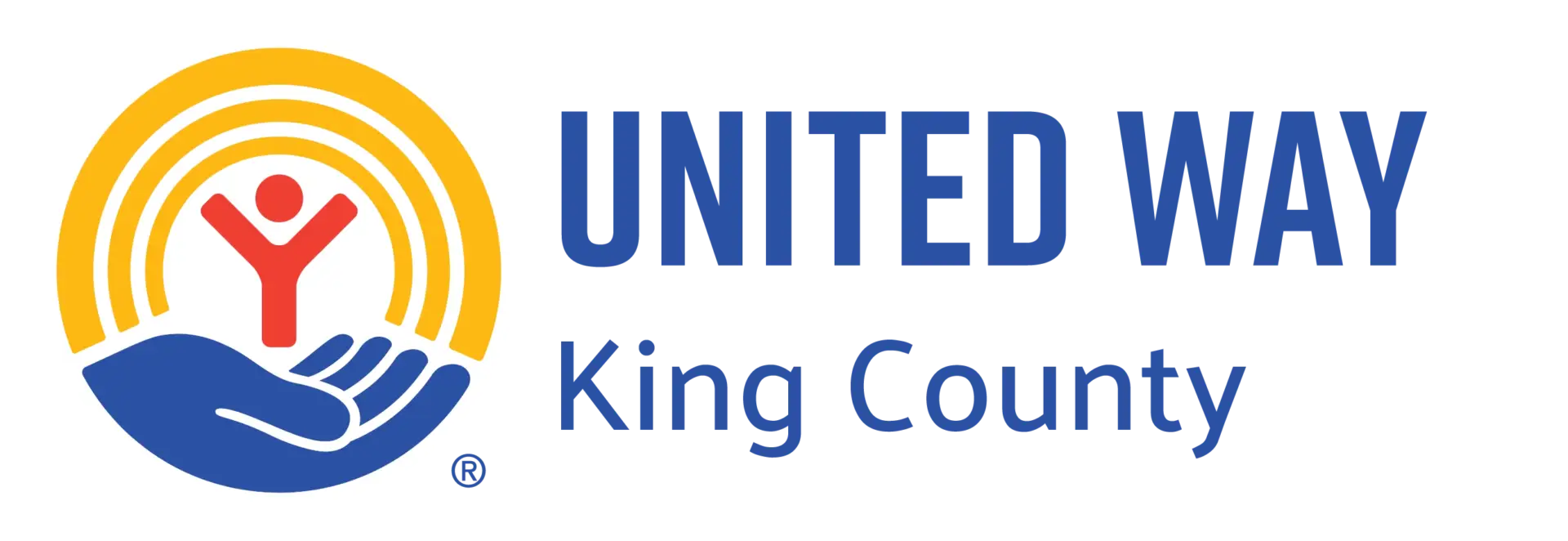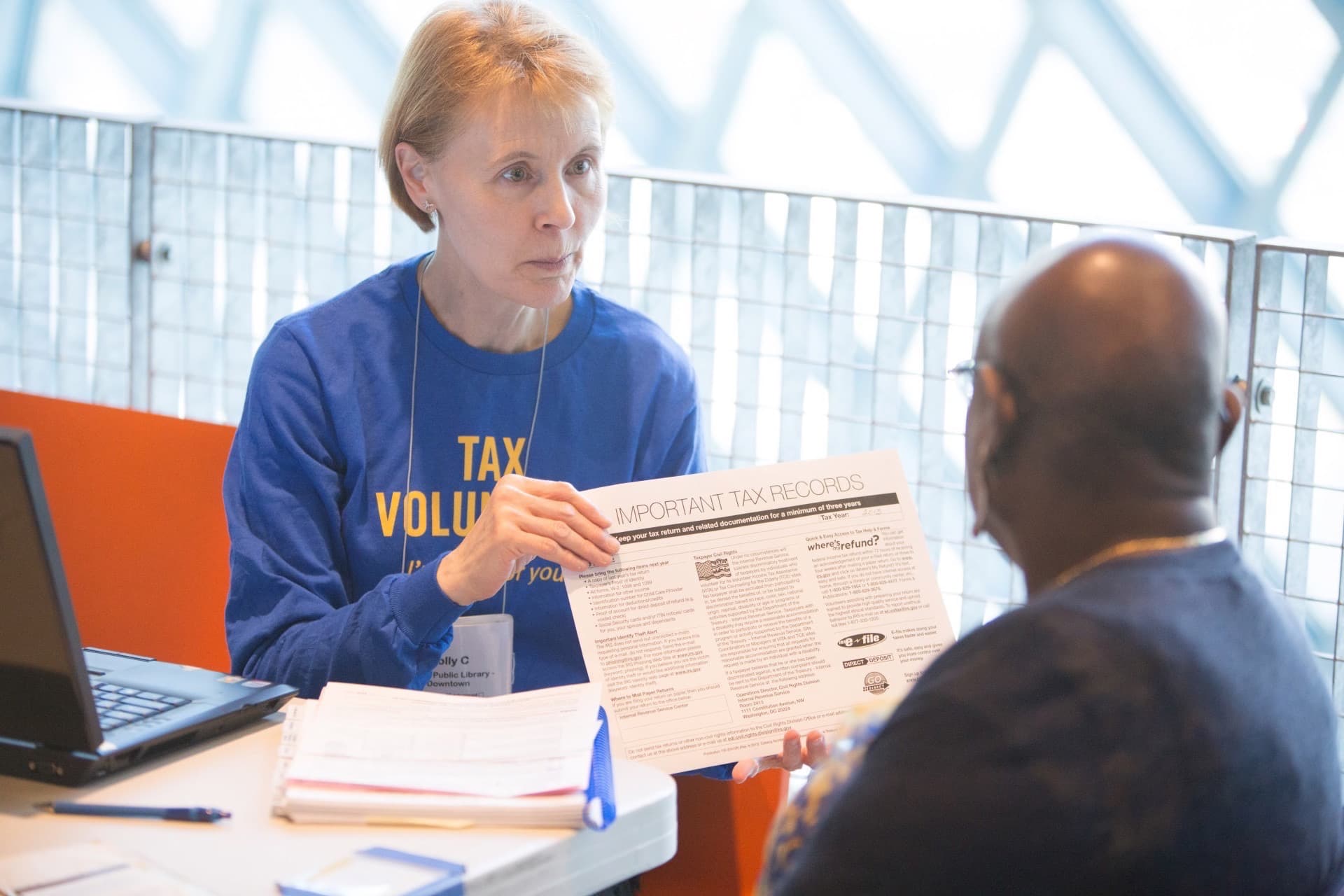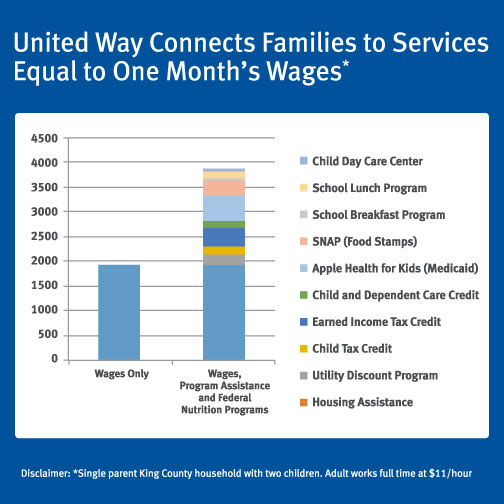Fighting Poverty, Creating Opportunity
Lauren McGowan, Director of Family Stability for United Way of King County, shares how the organization is lifting people out of poverty right here at home.
Earlier this week my Uber driver asked where I was going. I told him that I was going to talk with area business leaders about ending childhood hunger and poverty. Because I have the best job ever. (And yes, there are varying opinions on the impact Uber has on low-income employees.)
“Are people really poor in America?” he asked. I could see the unimpressed look on his face.
Poverty and hunger look different in the U.S. than in countries facing extreme poverty. People struggling with hunger and poverty in the U.S may have a job, a smart phone, Internet access, even a car. But that doesn’t mean they have access to healthy food, adequate housing, quality education, banking services or credit needed to build a stable future.
Having worked most of my career on this issue, I can tell you poverty in the United States is real. And it is growing.
Poverty, Here?
Twelve percent of people in King County—the greater Seattle area—live in poverty. That’s $22,214 or less for a family of four. Thousands get by with only slightly more.
The growing gap, not only in income but in access to opportunity, is one of the key issues of our time. This opportunity gap is having a devastating impact on communities of color and our economy.
Over the last decade my team at United Way has designed and tested innovative poverty reduction strategies. We’ve helped thousands of low-income people build assets through a matched savings account program. We’ve invested in job placement programs. We’ve mobilized hundreds of volunteers for our Free Tax Prep Campaign.
We’ve learned a lot about what works. And what doesn’t.
We Won’t Sit Back and Watch
If we want to break the cycle of poverty, more needs to be done both in policy and how people receive help. Last summer United Way launched our new Strategic Plan. It details our bold commitment to lift 50,000 people out of poverty by 2020.
The ways we’ll get there include:
- Promoting income support and public benefits to help lift people out of poverty. SNAP, EITC, and Child Nutrition Programs are highly effective—when utilized. We’ve created an effective model to connect eligible families to these resources.
- Mobilizing 150+ AmeriCorps, VISTA and other National Service members to build communities’ capacity to fight poverty and create a pipeline of talented, engaged citizens.
- Investing in job training and placement programs to connect 3,000 immigrants, people experiencing homelessness and adults with disabilities to living-wage jobs.
United Way will do everything we can with the resources and expertise we have. We will also rely on partners who have expertise on other critical strategies like election reform, job creation and tax reform.
Ending poverty. Big goal? Yes. Impossible goal? Never.
What else can United Way do to keep fighting poverty? We’d love to hear your ideas in the comments below.
Update: Are you a United Way donor? Want to know more?
Over the next few years we will mobilize new resources to double down on these efforts and invest our time and funding in new strategies. These may include:
• Partnering with community colleges to help nontraditional students’ complete apprenticeships, degrees and credential programs by connecting them to income supports and basic needs.
• Advocating for funding programs that help low-income families stretch their income—Working Families Tax Rebate, Breakfast After the Bell, SNAP and tax credits.
• Working with local governments and school districts to offer free meals by adopting Community Eligibility.






Comments